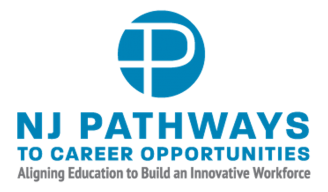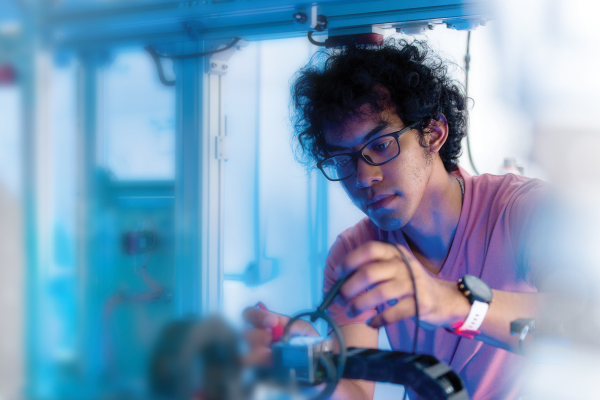 As the current Vice President for the New Jersey Council of County Colleges (NJCCC) and the Executive Director of the New Jersey Community College Consortium for Workforce and Economic Development, Catherine Frugé Starghill, Esq. has a solid history in workforce development. As a leader of the statewide coalition of partners for the New Jersey Pathways to Career Opportunities initiative, she aims to help build a stronger economy in the region by aligning education to the needs of the workforce community. “I began my career in workforce development in 2012 at the NJ Department of Labor and that is where I developed a passion for these types of initiatives,” says Starghill. “I experienced many roles, including the Director of Workforce Development, Executive Director of Workforce Development, and then later, Deputy Commissioner of the Department.”
As the current Vice President for the New Jersey Council of County Colleges (NJCCC) and the Executive Director of the New Jersey Community College Consortium for Workforce and Economic Development, Catherine Frugé Starghill, Esq. has a solid history in workforce development. As a leader of the statewide coalition of partners for the New Jersey Pathways to Career Opportunities initiative, she aims to help build a stronger economy in the region by aligning education to the needs of the workforce community. “I began my career in workforce development in 2012 at the NJ Department of Labor and that is where I developed a passion for these types of initiatives,” says Starghill. “I experienced many roles, including the Director of Workforce Development, Executive Director of Workforce Development, and then later, Deputy Commissioner of the Department.”
Recognizing that one of the largest workforce development training providers is community colleges, Starghill says her current position allows her to be more effective in driving initiatives forward. “By being entrenched with the community colleges in the region, we have been more successful in ensuring that workforce development and the academic side of community colleges work together to help more New Jersey residents have access to college credit that can lead to a credential or degree attainment opportunity. The New Jersey Pathways to Career Opportunities is dedicated to building a talent ecosystem and creating roadmaps that align curriculum across educational partners that help students and workers become lifelong learners.”
Pathways for the Future Workforce
The New Jersey Pathways to Career Opportunities Initiative in partnership with the New Jersey Business and Industry Association (NJBIA) has been very successful and has accumulated over 1,200 industry and education partners. “The NJBIA ensured we had the voice of industry guiding us and helped us make informed decisions,” says Starghill. “During the pandemic, we saw enrollments in all post-secondary education institutions plummet and resources were substantially reduced. This situation created an environment where many institutions that might not have collaborated in the past were now open to connecting and working more closely together.”
Aimed at creating workforce development pathways for the future workforce, the New Jersey Pathways to Career Opportunities program focuses on four key industries that drive the state’s economy: Health Services; Technology and Innovation; Infrastructure and Energy; and Manufacturing and Supply Chain Management. “There are ten Centers of Workforce Innovation that are each focused on an occupational area,” explains Starghill. “Within each area, we develop pathways and training from high school to community college to four-year colleges and universities, including labor unions, community-based training providers, and workforce development boards. We ultimately want to create on-ramps to opportunity.”

“By being entrenched with the community colleges in the region, we have been more successful in ensuring that workforce development and the academic side of community colleges work together to help more New Jersey residents have access to college credit that can lead to a credential or degree attainment opportunity. The New Jersey Pathways to Career Opportunities is dedicated to building a talent ecosystem and creating roadmaps that align curriculum across educational partners that help students and workers become lifelong learners.”
– Catherine Frugé Starghill
Vice President, NJCCC
Executive Director, New Jersey Community College Consortium of Workforce and Economic Development

Aligning Curriculum and Workforce Skills
The initiative celebrated its one-year anniversary in April 2023 with notable accomplishments. “Across the ten Centers of Workforce Innovation, we have twenty high schools and vocational technical schools; nine four-year colleges and universities; eight labor unions; and four community-based training providers and education associations that engage in smaller work groups to connect and enhance the 22 pathways,” says Starghill. “We have multiple pilot programs currently running, like high school career awareness and contextualized adult literacy training. There are also four-year universities, including Rowan University, that participate in our Centers of Workforce Innovation and are reviewing their curriculum and courses. Rowan is building a couple of bachelor’s degree programs in conjunction with community colleges to ensure all credits transfer to the major curriculum courses. This will help maximize transferability of community college credits for the students. We owe this to our New Jersey residents, so their investment and effort result in the maximum credit and degree attainment possible.”
Starghill says having multiple pathways is essential, especially since everyone’s life situation is different. “An individual’s education and training pathway is not linear. Life happens — you get married, have children, or have to take time off to care for a sick parent. We must create multiple on-ramps and off-ramps to make things easier for individuals to return to their education and training pathway.”
Empowering Community College Students
As organizations like NJCCC and the New Jersey Community College Consortium for Workforce and Economic Development continue to better align community college courses to four-year colleges and universities, Starghill says they look to expand their network and make connections with partners like Edge and NJ Transfer to further support these pathways. “We need to better align community college courses to four-year colleges and universities. Through our ongoing meetings and discussions with education and workforce partners, we find many four-year institutions are surprised by how advanced community college students are in only two years. Typically, a student in community college spends the first year taking general education courses and then enters into their major during their second year. We’re seeing many students at the community colleges are actually more advanced by year two than their counterparts at a four-year university.”
“Our employer partners in technology and innovation, for example, are also amazed by this trend and have said during panels that they are changing their perspective to focus more on community college students,” continues Starghill. “Companies like Microsoft and Google have noted that rising juniors from four-year colleges and universities often have not had any IT courses yet, but many community college students are further along. We look forward to exploring more of these insights and finding ways to strengthen partnerships between the education and business community. We will continue to help our partners align curriculum with the future – forward skills and credentials that are in demand within New Jersey’s key industries.”
You can learn more about NJCCC and New Jersey’s Community Colleges at njccc.org and the New Jersey Pathways to Career Opportunities at njpathways.org.
Industry Leadership Team Partners



